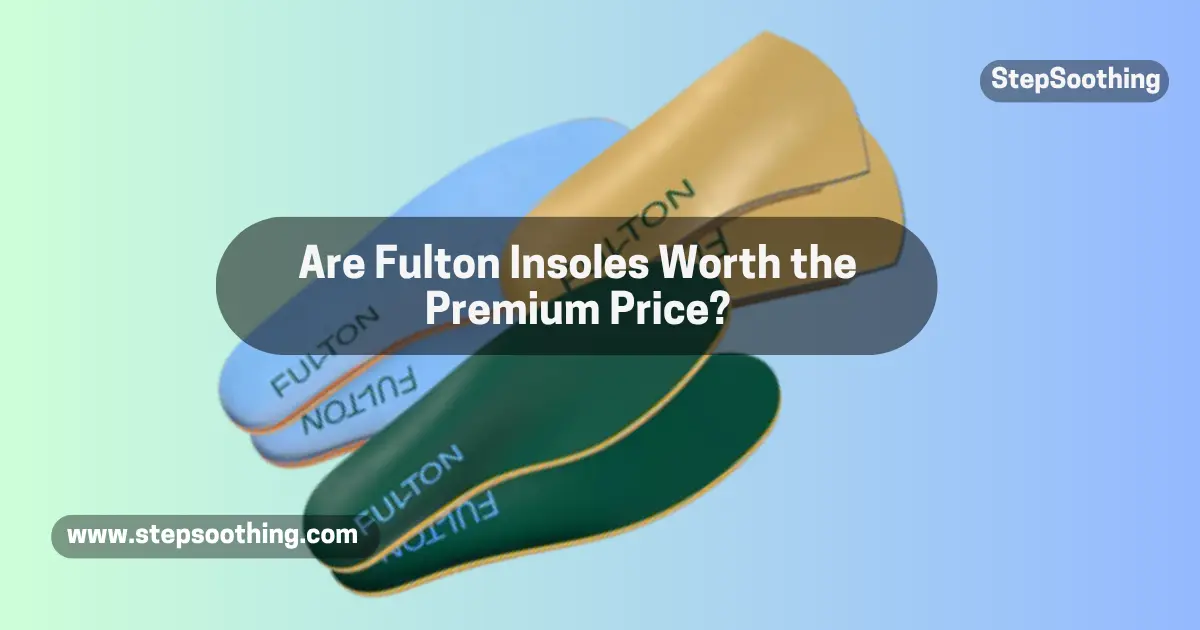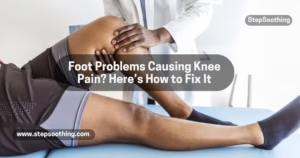If you’ve ever asked yourself why your feet still hurt despite wearing decent shoes, the answer might be hiding underfoot in your insoles. Most standard footwear includes flimsy inserts that offer little more than cushion, leaving your arches unsupported and your posture compromised. That’s where Fulton insoles come into the picture. Known for their premium materials and custom molding cork base, they promise better alignment, lasting comfort, and foot pain relief. But with a higher price tag than typical insoles, many wonder: Are Fulton Insoles Worth the Premium Price?
In this guide, we break down what sets them apart and whether they truly deliver value that justifies the cost. For an in-depth breakdown, check out The Ultimate Fulton Insoles Guide You Can’t Miss.
Are Fulton Insoles Worth the Price Compared to Other Orthotic Brands?

What causes foot pain in everyday footwear?
Poor arch support, misaligned posture, and low-quality insoles often cause chronic foot, heel, and knee pain. Standard footwear lacks structural support, leading to conditions like plantar fasciitis, overpronation, or joint strain during walking or standing.
What problems do Fulton insoles solve?
Fulton insoles provide structured arch support using a cork base that molds to the foot. They correct foot alignment, improve posture, and reduce pressure across the plantar fascia, knees, and hips. This makes them ideal for flat feet, high arches, or daily wear discomfort.
Curious about how they solve these issues structurally? Read more in the Fulton Insoles Posture & Alignment Guide for insights into how they impact the body from the ground up.
What makes Fulton insoles different from other insole brands?
| Feature | Fulton Insoles | Superfeet | Dr. Scholl’s | Powerstep |
|---|---|---|---|---|
| Arch Support | Structured, moldable cork base | Static arch support | Basic foam insert | Moderate EVA support |
| Fit Customization | Custom molds to foot shape | No molding | Universal fit | One-size trimming |
| Shock Absorption | High-rebound cork + resilient foam | Medium foam | Low durability gel | Good foam, wears down |
| Material | Vegan leather + organic cotton | Synthetic | Gel + foam blend | EVA + basic fabric |
| Odor & Moisture Control | Antimicrobial cotton, breathable design | Mild control | No moisture protection | Moderate wicking |
| Lifespan (miles) | 500+ miles | ~300 miles | <200 miles | ~400 miles |
| Foot Types Supported | Flat, high arches, wide/narrow, overpronators | Best for athletes | Casual use only | General use, standard fit |
| Shoe Compatibility | Sneakers, boots, loafers, narrow & wide shoes | Best for sneakers | Casual shoes only | Athletic shoes mainly |
How do Fulton insoles improve alignment and joint health?
Fulton insoles stabilize foot posture using a deep heel cup and firm arch platform. This distributes body weight evenly, reduces ankle rolling, and prevents excessive inward (overpronation) or outward (supination) movement. Improved alignment lowers joint stress in knees and hips.
To explore how they promote biomechanical health, visit the Fulton Insoles Posture & Alignment Guide for expert-backed insights.
What materials are used in Fulton insoles?
Fulton insoles use:
- Cork base: Custom molds to individual foot anatomy
- Resilient foam layer: Shock absorption and pressure distribution
- Vegan leather cover: Durable and flexible
- Natural cotton top layer: Breathable, antimicrobial, and odor-resistant
Want to know more about the eco-friendly benefits? Discover the full story in Eco-Friendly Fulton Insoles: Materials That Matter.
Who benefits most from using Fulton insoles?
Fulton insoles are ideal for:
- People with flat feet or high arches
- Workers on their feet 8+ hours a day
- Individuals with plantar fasciitis, joint pain, or foot fatigue
- Walkers and hikers needing long-mile support
- Anyone wearing shoes lacking removable insoles
Still wondering how to choose the right Fulton insole for your foot type? Visit the step-by-step insole selection guide to make the best choice.
How do they compare in everyday use?
Fulton insoles remain stable in:
- 4E width shoes
- Loafers and dress shoes
- Work boots and hiking shoes
- Sneakers with or without removable footbeds
They prevent slippage, irritation, and discomfort when swapping between shoes.
| Brand | Learn More |
|---|---|
| Fulton Insoles | |
| Superfeet Insoles | |
| Dr. Scholl’s Insoles | |
| Powerstep Insoles |

Do Fulton insoles reduce heel pain and plantar fascia strain?
Yes. The deep heel cup and adaptive arch lift pressure from the plantar fascia, which relieves inflammation and heel fatigue. The custom mold enhances arch control, improving comfort and reducing the risk of foot injuries.
How long do Fulton insoles last?
Fulton insoles last up to 500+ miles with daily use, significantly longer than typical gel or foam inserts. They maintain structural support, resist flattening, and remain odor-free due to their antimicrobial cotton layer.
Do Fulton insoles work better than Superfeet, Dr. Scholl’s, or Powerstep?
Yes, especially for long-term support and custom fit. Most competitors:
- Use static foam or gel that flattens quickly
- Offer one-size-fits-all designs
- Provide limited comfort in lifestyle shoes
Fulton insoles:
- Conform to individual foot shape
- Provide long-term cushioning and arch control
- Fit in a broader range of footwear types
Can Fulton insoles prevent injury or posture problems?
Yes. Fulton insoles promote proper biomechanical alignment, which:
- Reduces strain on ankles, knees, and hips
- Improves balance
- Enhances gait for people with posture issues
- Prevents muscle overuse and repetitive stress injuries
Learn more about their impact on joint pain in the dedicated guide: Can Fulton Insoles Help With Knee and Back Pain?.
Are Fulton insoles sustainable?
Yes. Fulton insoles are made with:
- Vegan cactus leather
- Natural cork
- Organic cotton
They’re environmentally friendly and avoid plastic-heavy materials common in low-cost alternatives.
People Also Asked
Real-World Feedback: Do They Really Work?
Customer examples:
- Gwen F. (65): Knee and back pain disappeared with daily use.
- Marc D.: Could work full days in boots pain-free.
- Mary C.: Stabilized overpronation, improved balance.
- Robert F.: Significant reduction in joint pain within weeks.
- James S.: 4E width shoes finally supported without gaps.
These testimonials consistently highlight pain relief, comfort, and versatility across shoe types and activities.
Final Verdict: Are Fulton Insoles Worth It?
Yes. Fulton insoles outperform generic insoles in comfort, support, durability, and adaptability. For users with alignment issues, flat feet, or lifestyle footwear needs, they provide lasting structural benefits and custom comfort — justifying the premium price.
For the complete guide to choosing, using, and understanding Fulton insoles, don’t miss The Ultimate Fulton Insoles Guide You Can’t Miss.



